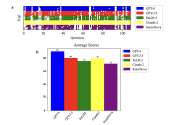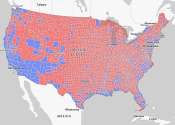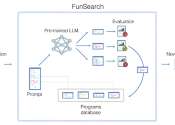Computer Sciences news
Computer Sciences
High-speed face tracking enhances augmented reality experiences
Augmented reality (AR) has become a hot topic in the entertainment, fashion, and makeup industries. Though a few different technologies exist in these fields, dynamic facial projection mapping (DFPM) is among the most sophisticated ...
2 hours ago
0
23
Computer Sciences
Low-cost framework enhances metadata replication with adaptive synchronization
Metadata management has always been the focus of distributed file systems research. Metadata replication exhibits a comparative advantage in maintaining locality and balancing system load. However, according to the requirements ...
Feb 18, 2025
0
0

Contextual analysis for recommending code reviewers
Code review is essential in software development, playing a vital role in enhancing product quality by catching mistakes early on. An integral part of this procedure is choosing the right reviewers to examine modifications ...
Feb 14, 2025
0
0

Computer graphics team makes advances in simulating ink diffusion
Calculating and visualizing a realistic trajectory of ink spreading through water has been a longstanding and enormous challenge for computer graphics and physics researchers.
Feb 13, 2025
0
25

Possible end of Moore's Law: Engineers discuss consequences and opportunities
In 1965, Gordon Moore defined a relationship between cadence and cost for computing innovation that came to be known as "Moore's Law." This rule both described and inspired the exponential growth that built the Information ...
Feb 12, 2025
0
1
Computer Sciences
New algorithm improves how AI can independently learn and uncover patterns in data
Researchers have developed a new AI algorithm, called Torque Clustering, that is much closer to natural intelligence than current methods. It significantly improves how AI systems learn and uncover patterns in data independently, ...
Feb 11, 2025
0
49
Computer Sciences

The era of practical quantum computers draws closer
In 1981, American physicist and Nobel Laureate, Richard Feynman, gave a lecture at the Massachusetts Institute of Technology (MIT) near Boston, in which he outlined a revolutionary idea. Feynman suggested that the strange ...
Feb 10, 2025
0
0
Computer Sciences

Cloud-based computing: Routes toward secure storage and affordable computation
Storing data in the cloud is now routine for people and companies alike, but cybersecurity risks still exist, particularly in handling user authentication and access control securely. Researchers are developing novel methods ...
Feb 10, 2025
0
2
Computer Sciences

Machine learning approach enhances emotion detection accuracy
Facial emotion recognition could have broad applications across health care, education, marketing, transportation, and entertainment. It might be used to help monitor patients remotely or in overstretched hospitals or emergency ...
Feb 7, 2025
0
0
Computer Sciences

Psychology-based tasks assess multi-modal LLM visual cognition limits
Over the past decades, computer scientists have created increasingly advanced artificial intelligence (AI) models, some of which can perform similarly to humans on specific tasks. The extent to which these models truly "think" ...
Hardware

Sustainable SOT-MRAM memory technology could replace cache memory in computer architecture in the future
How much energy is consumed each time we upload an image to social media, which relies on data centers and cloud storage? Data centers currently account for about 1% of global energy consumption, amounting to 200 terawatt-hours ...
Feb 6, 2025
0
37
Computer Sciences

Improving domain-specific languages to save time on hybrid particle filtering
A particular set of probabilistic inference algorithms common in robotics involve Sequential Monte Carlo methods, also known as "particle filtering," which approximates using repeated random sampling. ("Particle," in this ...
Feb 6, 2025
0
10
Software

Software empowers users to select quantum program transpilers without being tied to a specific vendor
A research team at Osaka University and TIS Inc. has developed software "Tranqu" that allows users to select a transpiler that converts and optimizes quantum programs for execution on quantum chips. This enables users to ...
Feb 4, 2025
0
0
Computer Sciences

Computer scientists develop solutions for making AI models more efficient and customizable
Artificial intelligence (AI) is everywhere—from the chatbots we consult for customer support to tools predicting how diseases might spread. But the computing power and energy required to power modern AI models—such as ...
Feb 3, 2025
0
24
Computer Sciences

AI gives nonprogrammers a boost in writing computer code
What do you think there are more of: professional computer programmers or computer users who do a little programming?
Feb 3, 2025
0
0
Computer Sciences

'Digital doppelgangers' are helping scientists tackle everyday problems—and showing what makes us human
As rising seas lap at its shore, Tuvalu faces an existential threat. In an effort to preserve the tiny island nation in the middle of the Pacific Ocean, its government has been building a "digital twin" of the entire country.
Jan 30, 2025
0
0
Computer Sciences

Using network science, study shows music has become less complex
A team of Italian computer scientists from Sapienza University of Rome and the University of Padova reports that network science can be used to measure the complexity of a piece of music, allowing for comparison between genres. ...
Computer Sciences

Fitness centrality: New tool finds critical points in everything from cybersecurity to ecological conservation
What if you could break apart a network like grating cheese—isolating its most crucial elements, fragmenting it into disconnected pieces to reveal where disruptions would be most devastating? That's the power of fitness ...
Jan 29, 2025
0
40
Computer Sciences

Problematic paper screener: Trawling for fraud in the scientific literature
Have you ever heard of the Joined Together States? Or bosom peril? Kidney disappointment? Fake neural organizations? Lactose bigotry? These nonsensical, and sometimes amusing, word sequences are among thousands of "tortured ...
Jan 29, 2025
0
0
Robotics

Humanoid robots join human musicians for synchronized musical performances
In a fascinating blend of technology and artistry, researchers present a study in PeerJ Computer Science, showcasing how humanoid robots can collaborate seamlessly with human musicians during live musical performances. This ...
Jan 28, 2025
0
33
Computer Sciences

A fundamental revision of how AI acquires and processes language could result in more effective LLMs
Can a computer learn a language the way a child does? A study published in Computational Linguistics by professors Katrien Beuls (University of Namur) and Paul Van Eecke (AI Lab, Vrije Universiteit Brussel) sheds new light ...
Jan 28, 2025
0
0
Computer Sciences

AI revolutionizes training for sensorimotor skills from surgery to tennis
The new wave of powerful generative artificial intelligence (AI) systems such as ChatGPT and DALL-E has introduced powerful capabilities such as writing and image generation. In recent studies, researchers have developed ...
Jan 24, 2025
0
0
Electronics & Semiconductors

Scalable optical memory unit poised to improve processing speed and efficiency
Researchers have developed a new type of optical memory called a programmable photonic latch that is fast and scalable. This fundamental memory unit enables temporary data storage in optical processing systems, offering a ...
Jan 23, 2025
0
27
Computer Sciences

Chatbot offers empathetic, multilingual crime reporting to ease dispatcher workload
Across the nation, 911 dispatch centers are facing a worker shortage. Unfortunately, this understaffing, plus the nature of the job itself, leads to dispatchers who are often overworked and stressed. Meanwhile, when community ...
Jan 23, 2025
0
24






































